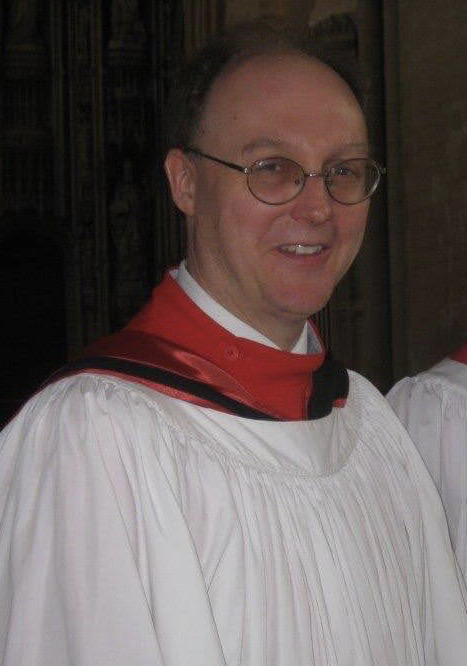My day job has been particularly irksome during lockdown, a situation exacerbated by the absence of the usual consolation of singing with the St Albans Cathedral Choir at weekends. So along with my fellow lay clerks I was very happy to learn that sung worship was to be reintroduced over the summer, albeit in an extremely modified form to begin with. We were invited to make ourselves available for specific weekends in July and August, from which volunteer list a duty roster was drawn up, comprising precisely one singer per weekend.
I was assigned August 29th and 30th, which included the privilege of providing music for the first wedding to take place at the cathedral since the easing of the lockdown restrictions, scheduled for Saturday afternoon in the Lady Chapel. The event held particular poignancy for me, having only recent celebrated the 25th anniversary of my own wedding at the same venue. I was extremely conscious of the responsibility of helping to make the occasion memorable, especially as the participants would not be able themselves to join in the singing of traditional hymns. I was also very concerned at how well my voice would function, not having used it for anything more ambitious than singing along with Spotify for several months! Fortunately the organist offered to play Panis Angelicus, which we performed just before the exchange of vows, down a semitone in G flat. This eased the pressure sufficiently for me to manage the top F in Ralph Vaughan Williams’ Love Bade Me Welcome, which had been chosen as the music for the Signing of the Register. We survived all the other tricky corners, and were rewarded with appreciative smiles from the bride and groom as they processed out.
The following morning presented a very different challenge in the form of the Parish Eucharist in the much larger space, and contrasting acoustic, of the longest nave in England. The service was being simulcast on the cathedral’s YouTube channel, so I had to report for duty a full hour beforehand for sound and balance checks. Although there was a microphone for the broadcast, it was not connected to the PA system, so I would have to make myself heard at the back of the building unassisted. I was positioned at the east end of the nave, directly in front of the organ gallery. A transparent screen had been erected about three metres in front of me, somewhat redundantly I couldn’t help but feel, seeing as the nearest person was the celebrant on the high altar, another five metres or so beyond that! Again there could be no congregational singing, so the propers of the Eucharist were either said by all (the Gloria and Creed) or sung by me alone to a plainsong setting (Sanctus, Benedictus and Agnus Dei). My two ‘set piece’ moments were at the Offertory, when I sang a text from Ecclesiasticus set by the outstanding contemporary composer Philip Moore, and during communion, when we reprised the Vaughan Williams Mystical Song setting from the day before.
All of us who have taken a turn at being a ‘one-person choir’ have relished the challenge and appreciated the opportunity to use our voices again, but are aware that this is only a staging post on the route to the resumption of full choral singing. The next step seems likely to be taken later this month, when small ensembles will start socially-distanced performances in three-or four-part harmony. It would be lovely to think that full choirs could be back together again by Christmas, but we will have to wait and see whether or not the general course of events makes this possible.
Geoff McMahon

